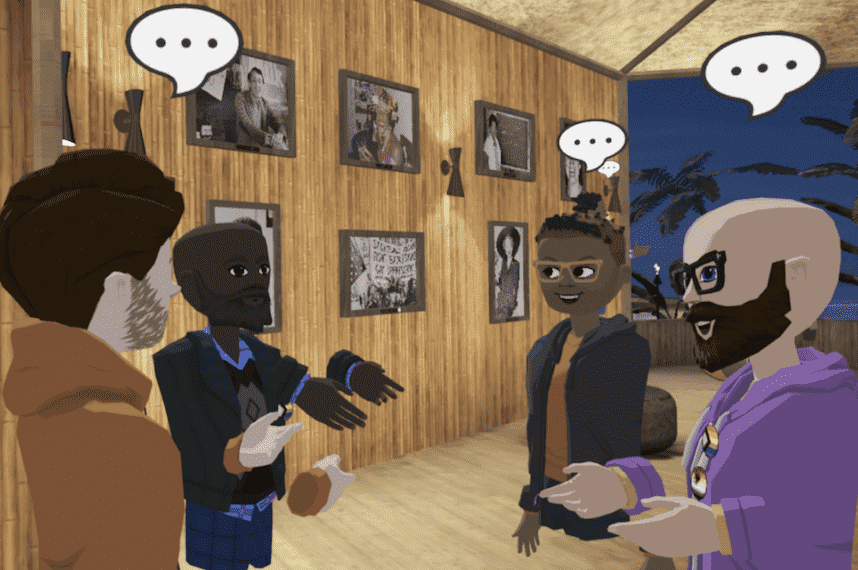The early adopters of mass-market virtual reality headsets are working together to display their art, organize work meetings, record their favorite DJ sets, and play a host of games ranging from paintball and dodgeball to escape rooms and obstacle courses, according to researchers in Clemson University’s School of Computing.
The researchers’ award-winning study is among the world’s first detailed glimpses into how people are collaborating in virtual reality since technological improvements and price drops started making it widely available to the masses about five years ago.

Guo Freeman, an assistant professor who led the research, said the team found that people were using virtual reality to work together on activities that varied from art and gaming to homework and coding. The team also found that the way people collaborate in virtual reality is very similar to what they do face to face, she said.
“They feel they are actually doing things together, which creates a sense of presence and engagement,” Freeman said. “Some people are saying it is a good alternative if you cannot meet face to face offline but if you still want the natural feel of working with others.”
The team based its findings on voice and text interviews conducted on Discord, Skype and Google Hangouts with 30 virtual reality users who engaged with several platforms, including Rec Room, VRChat and High Fidelity. Users ranged in age from 18 to 65 and had been using VR anywhere from six to 36 months.
Virtual reality typically requires users to put on a headset that immerses them in the experience with unique features, including voice communication, full-body tracking and 360-degree panoramic views of the virtual world.
The School of Computing study reflected the immersive power of the technology and the importance of collaboration to make the most of it. Users described VR as powerful, mind-blowing and eye opening and said they would prefer to experience it with other participants than alone, researchers said.
Brian Dean, acting director of the School of Computing, said the research underscores the strengths of Clemson’s research in virtual reality.
“As this technology begins to transform how we work, learn and play, the School of Computing’s researchers are answering some of virtual reality’s most vital social and technical questions,” Dean said. “I congratulate the team, led by Dr. Freeman, on helping advance knowledge on this important topic.”
Freeman said the team found a close-knit virtual reality community that was quick to adopt the technology, was passionate about it and was eager to bring in new members. She was impressed with how creative some users were with the technology.
Some, for example, created art in virtual reality, while others made real-world art and then built virtual-reality galleries to display it.
“I think this could transform how people create things and share their creativity with others,” Freeman said.
Some virtual reality users told the team they collaborated on homework not only with friends but also with strangers. It happened naturally and frequently, the users said.
One VR user told the team, “I’ve helped people from different countries with their homework, and they will help me with my homework. […] I was helping some people with math, and someone from Japan was helping me with my Japanese. I just go to a world and say, ‘Hey, I need help with my homework.’ Some people came up to me and helped. Other times I was like, ‘I knew this person was taking this class.’ So I asked them, ‘Hey, I know you’re taking this class. Could you help me out?’ and they said ‘Yeah!’”
The study’s findings were first reported in Proceedings of the ACM on Human-Computer Interaction. The team’s paper was titled, “Working Together Apart through Embodiment: Engaging in Everyday Collaborative Activities in Social Virtual Reality.”
Co-authors were Freeman; Dane Acena, who was then a student and now holds a Master of Science in computer science; CECAS Dean’s Assistant Professor Nathan J. McNeese; and HCC Ph.D. student Kelsea Schulenberg.
The research recently won a Best Paper Honorable Mention Award at January’s ACM International Conference on Supporting Group Work. That puts the paper among the top 5% at the conference.
For Freeman, it was her ninth Best Paper Honorable Mention Award in four years.
Freeman, who has been studying virtual worlds and online gaming for a decade, said that when social VR first came out some people viewed it as just another game, but it’s more than that.
“People always want to get connected with others, and this is another way for people to build relationships,” Freeman said. “I think this is a great way to introduce social interaction in an immersive and realistic way.”
Get in touch and we will connect you with the author or another expert.
Or email us at news@clemson.edu

